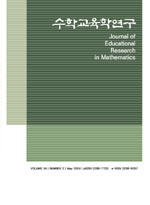학술논문
Mathematical, experimental and metaversal approaches to catenoid in geometry education
이용수 54
- 영문명
- Mathematical, experimental and metaversal approaches to catenoid in geometry education
- 발행기관
- 대한수학교육학회
- 저자명
- 서민혜(MinHye Seo) 이동선(Dongsun Lee)
- 간행물 정보
- 『수학교육학연구』제34권 2호, 171~185쪽, 전체 15쪽
- 주제분류
- 사회과학 > 교육학
- 파일형태
- 발행일자
- 2024.05.30
4,600원
구매일시로부터 72시간 이내에 다운로드 가능합니다.
이 학술논문 정보는 (주)교보문고와 각 발행기관 사이에 저작물 이용 계약이 체결된 것으로, 교보문고를 통해 제공되고 있습니다.

국문 초록
영문 초록
The catenoid is formed between two coaxial circular rings and is mathematically classified as a minimal surface. The shape of the catenoid is very interesting and can be used for educational purposes as it explains curvatures and equilibrium shapes in nature. There are many interesting ways to create a catenoid with two ends, i.e. mathematical, experimental and metaversal approaches. This paper details the mathematical formulation and then creates and observes the catenoid for mathematics education. We also provide a tutorial video to create and observe the catenoid in the metaverse. This paper explores the mathematical properties of the catenoid for educators and highlights its use in experiments and virtual environments for educational purposes. Geometric surfaces have been studied extensively from a mathematical perspective. Mathematical concepts are physically invisible but difficult to understand because a mathematical surface has no volume and no mass. The catenoid is a minimal surface found in nature (e.g. soap films). This surface, classified as a minimal surface, can be understood through simple calculus and remains a subject of ongoing research in the field of differential geometry as one of the problems related to the classification of minimal surfaces. In mathematics education, the catenoid can motivate studies from basic calculus to differential equations, mathematical analysis and geometry. The aim of this paper is to mathematically explore the catenoid, which can be used in different ways depending on the objectives of the educator or the different levels of learning, and to inform educators about its application in experiments and computer simulations within virtual environments.
목차
I. INTRODUCTION
II. THEORETICAL BACKGROUND
III. METHODS
IV. RESULTS
V. DISCUSSION AND CONCLUSION
CONFLICTS OF INTEREST
ACKNOWLEDGEMENTS
REFERENCES
키워드
해당간행물 수록 논문
- 교육과정에서 수학 내적 연결의 구체화 방안 모색
- 교사의 수업 방식에 대한 학생들의 인식이 수학 흥미와 자기효능감의 변화에 미치는 영향 분석
- 2023년 수학교육 정책사업의 성과와 개선 방안에 대한 연구
- 증명과 정당화 사이의 관계를 바라보는 국내 수학교육 연구의 관점 탐색
- 로봇을 활용한 기하 교수·학습 환경에서 초등학생의 각에 대한 수학적 의미 형성
- Mathematical, experimental and metaversal approaches to catenoid in geometry education
- 수학 학습을 안내하는 수학적 태도 및 실천 평가 피드백의 활용
- 수학교육에서의 인공지능
- 베이즈 통계학의 교수학적 분석과 학교수학에서의 적용 가능성 탐색
- 수학교육학연구 제34권 2호 목차
- 교사의 설명하기 역량 향상을 위한 교사교육과정 자료 분석 연구
참고문헌
관련논문
사회과학 > 교육학분야 BEST
더보기사회과학 > 교육학분야 NEW
- 생성형 AI를 활용한 초등학교 사회과의 교수학습 프레임워크 개발
- 사회과 교과서 연구의 동향과 과제 -시기별 과목군별 연구 영역을 중심으로-
- 환경도서를 활용한 초등학교 기후정의 교육 내용 요소 구성
최근 이용한 논문
교보eBook 첫 방문을 환영 합니다!

신규가입 혜택 지급이 완료 되었습니다.
바로 사용 가능한 교보e캐시 1,000원 (유효기간 7일)
지금 바로 교보eBook의 다양한 콘텐츠를 이용해 보세요!



